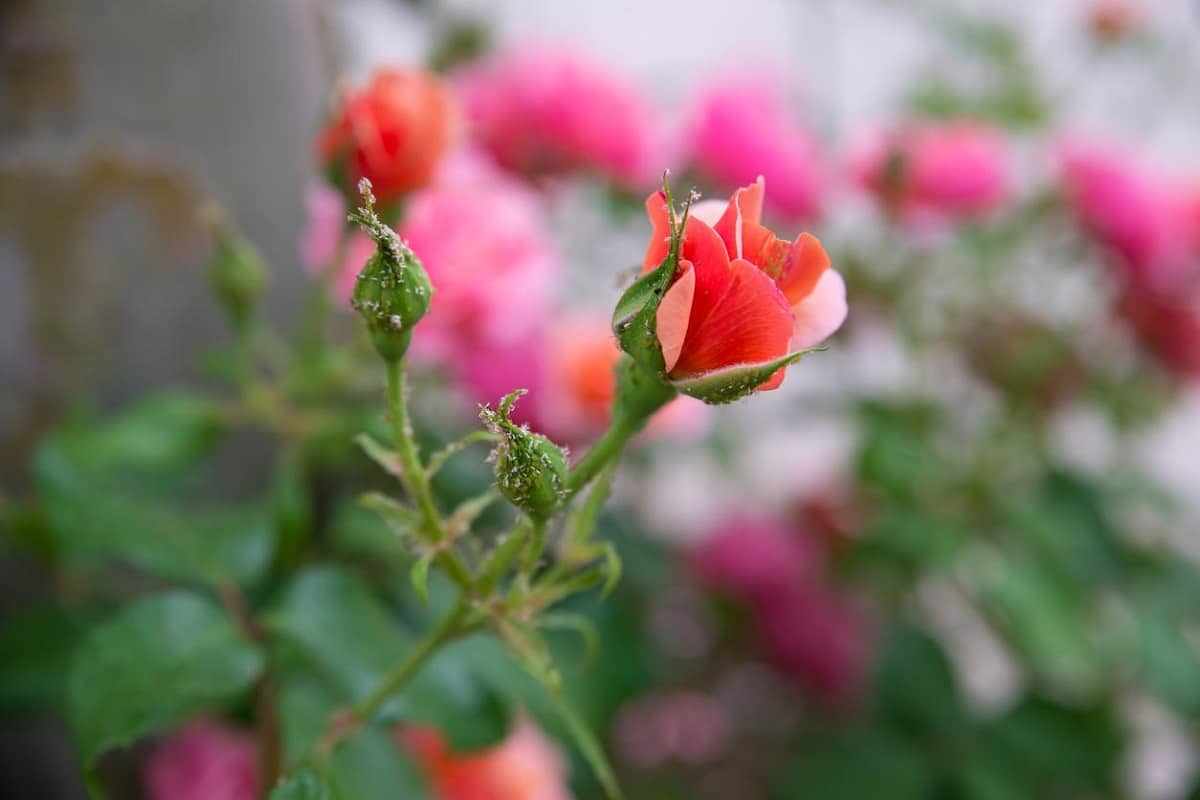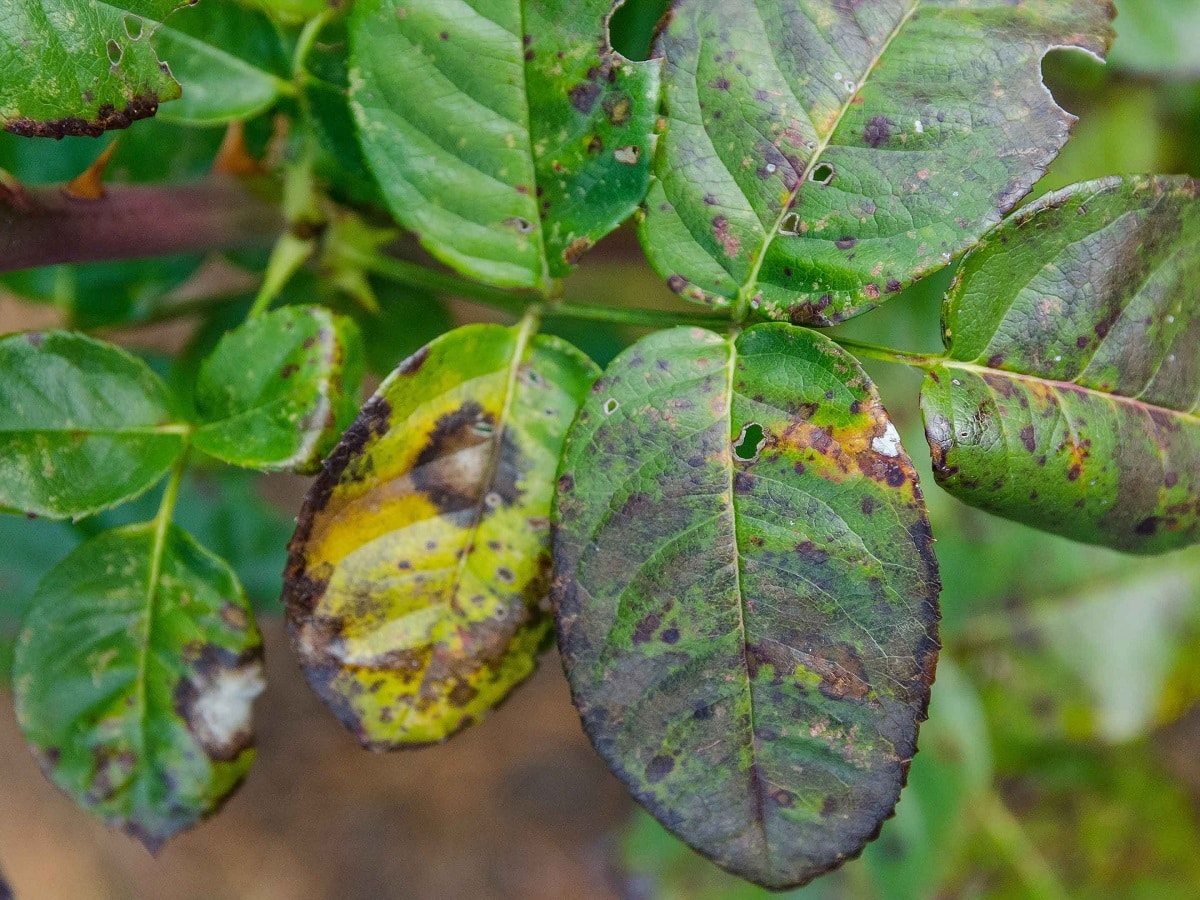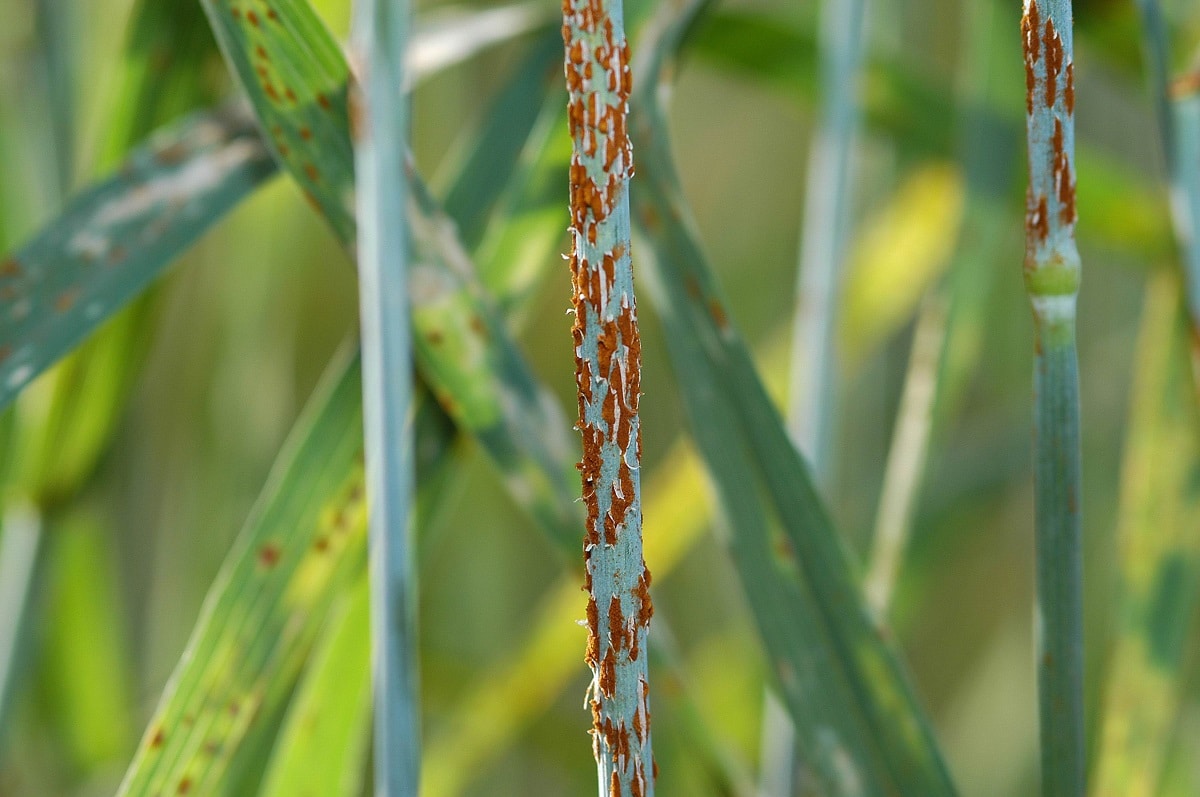
Rust is a fungus that affects many plant species, especially rose bushes. Once the rust on rose bushes manifests itself, is difficult to remove and has an unfortunate aesthetic effect. The environment he likes is humid. When it rains, it spreads extremely quickly, but it doesn't actually show up until two months later. The first symptom that we can observe is the appearance of warts of different colors on the leaves.
In this article we are going to tell you everything you need to know to combat rose rust, its characteristics and symptoms to be able to identify it quickly.
what is rust

Unlike other garden fungi such as powdery mildew, rose rust is typical in gardens. This is not a relief, rather it is an incentive to be vigilant and ready to combat rose rust and, if possible, prevent its appearance.
There are many factors that can trigger the appearance of rust. Broadly speaking, we can attribute its appearance to humidity and heat, which are the perfect environment for most fungi, but the fact that rose rust is a problem has to do with the resistance of rose bushes against any pest.
Rose rust is a disease caused by a fungal attack. This is a serious disease in rose bushes, and in southern Europe, it can even kill them. This fungal plant disease is caused by two different fungi: Phragmidium tuberculatum and Phragmidium mucronatum.
It seems that depending on weather conditions and where the rose bushes are planted, they may be more prone to shrinking one or the other. In northern Europe, the most common rust-causing fungus is Phragmidium tuberculatum, while in southern Europe, the fungus that causes rust is Phragmidium mucronatum. In gardening it is important to treat and combat rust since the effects are equally harmful, the same symptoms and similar treatments.
Symptoms of rust in rose bushes

Early detection of any type of disease or pest helps us take the appropriate corrective measures to eradicate it as quickly as possible. The first symptom of rust on a rose bush is an orange bump that appears on the underside of leaves. These spots then turn brown or black.
Over time (if we do not stop the disease in time), spots or bites appear on the tops of the leaves. The fungus will continue until it invades the branches of the rose. In the worst case, the leaves end up falling to the ground and the branches die because the flow of sap is greatly altered.
Prevention of rust in rose bushes

To prevent fungi from developing on rose bushes, the first treatment we must give to rose bushes is preventive. It's not that we want to avoid oxidation 100%, but obviously we can avoid it, or in the worst case, if:
- We do a proper pruning. Pruning rose bushes has a preventive effect on the appearance of fungi (spots, moulds) because we allow sunlight and air to reach the interior of the bushes, which is necessary to prevent them from appearing.
- We maintain a good planting distance between the rose bushes. This suggestion links to the previous suggestion.
- The fungus thrives in conditions of high heat and humidity, what can happen when rosebushes are close together and when they are not well pruned.
- pay correctly, taking into account that organic fertilizers such as earthworm humus can significantly improve the structure of the soil and prevent the appearance of various fungi.
- Do not wet the leaves with irrigation. Rose bushes should be watered from the bottom, avoiding splashes as much as possible.
- Remove any pruning debris, especially if they are affected by fungus.
- Keep the garden free of weeds.
Useful home remedies
At this point we have to distinguish that there are several ways to stop oxidation, we can use ecological treatments or the direct use of systemic fungicides... some of which are formulated based on ecological remedies that you will see below.
There is a lot of literature on this subject and we have to decide how far we are willing to go to get rid of rose leaf diseases.
Various combinations of products (licensed) are used in organic farming to prevent oxidation:
- Bordeaux broth: copper sulfate for rose bushes
- Calcium Sulfur Broth, Rust Inhibitor
- Combination of the previous two
There are also a number of household rose fungicides that appear to be effective against rust. The problem with home remedies for these fungal plants is that they may be less effective or take longer to achieve their goals:
- Garlic sauce. To treat rust with garlic, we need a crushed head of garlic, which we put in a container with 2 warm water.
- Partially cover and marinate for 24 hours. We filter the results and dilute to 100 ml per liter of water. We apply twice a day for 5 days.
- Onion sauce. The process is exactly the same as the garlic maceration process.
- Onions and garlic are natural antifungals.
- chamomile sauce. We soak 200 grams of chamomile in 5 lukewarm water. We partially cover this preparation and let it rest for 24 hours. After 24 hours, we filter the results and dilute 250 ml per liter of water. We apply 2 times a day (morning and evening) for 5 days.
- Nettle slurry. Nettle pulp is an impregnated nettle that fights all kinds of fungal infestations. It is a little more complicated than the previous ones, but we have the advantage that the prepared preparations are already available.
We must remember that the damaged parts of the plants never recover, so we must be attentive to the first symptoms. Rust's best friend is high humidity and moderate temperatures, so night watering should be canceled at the end of summer. There is nothing we can do about rainwater as long as there is a good drainage system to prevent puddles from forming.
I hope that with this information you can learn more about rust in rose bushes and its characteristics.